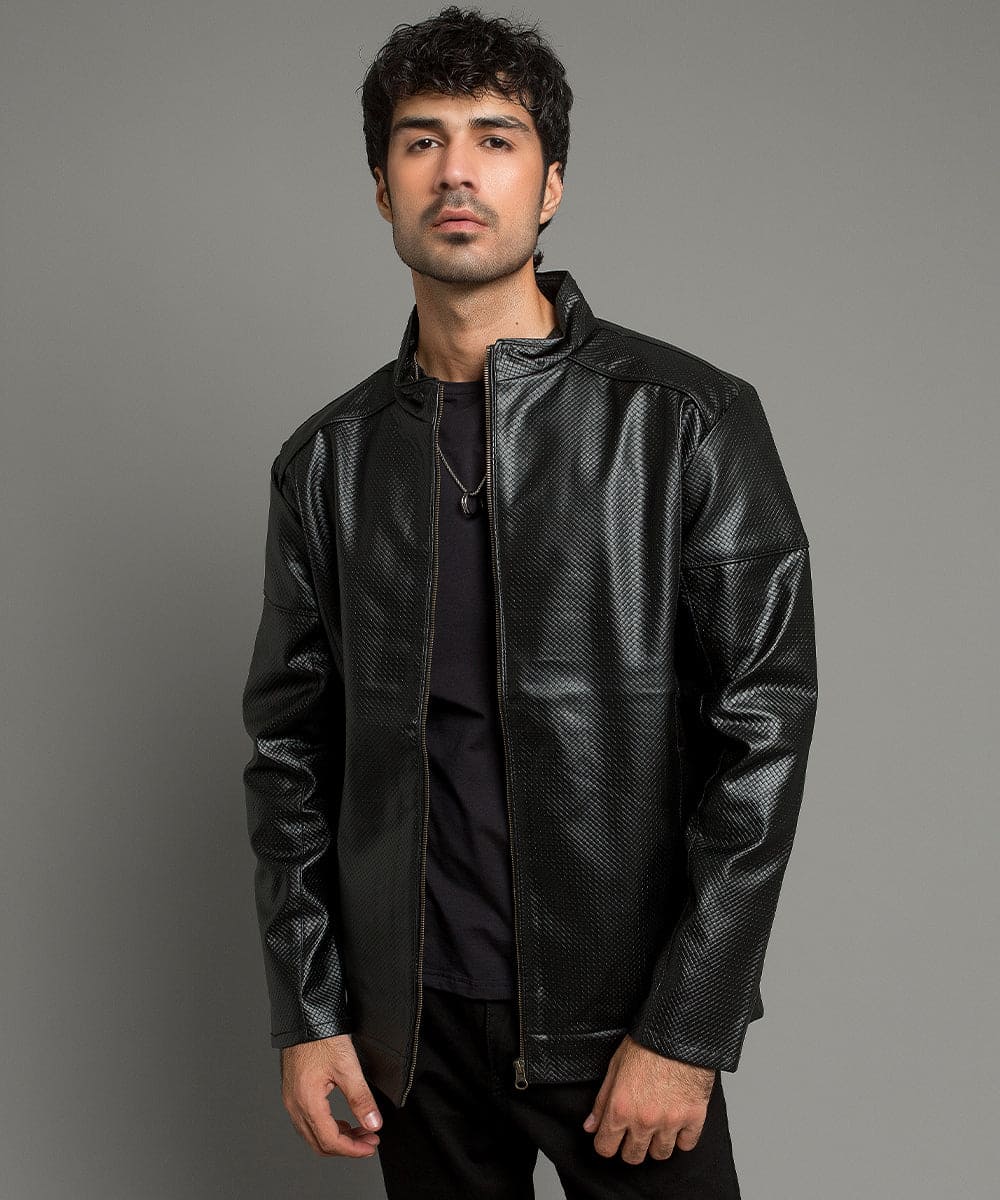
How to Tell if Your Black Leather Jacket Is Real or Faux?
Share
How to Tell if Your Black Leather Jacket Is Real or Faux?
A black leather jacket is one of the most iconic fashion pieces ever made—but not all leather is created equal. With so many convincing faux leather alternatives on the market, you might find yourself wondering: Is my black leather jacket real or faux?
Whether you’re checking a recent buy or vintage find, here are 7 reliable ways to tell the difference between genuine and synthetic leather—so you can shop (and style) smarter.
✅ 1. The Touch Test: Feel the Texture

Genuine leather usually feels soft, supple, and slightly textured. It warms to your touch and flexes naturally.
Faux leather, on the other hand, often feels:
-
Plasticky
-
Slick or cold
-
Too smooth or overly uniform
Pro Tip: Run your fingers across the surface. Real leather will have tiny variations and may even feel uneven in some areas—that’s a good sign.
✅ 2. Check the Label or Tag

Always start by checking the jacket’s tag, which often states the material.
Look for:
-
“Genuine Leather”
-
“Top Grain Leather”
-
“Full Grain Leather”
-
“100% Leather”
If it says “PU leather,” “vegan leather,” “polyurethane,” or “synthetic material”, it’s faux.
Note: Some fast-fashion brands use clever marketing terms like “eco leather” or “leather-look.” These are almost always faux.
✅ 3. Smell the Jacket
Real leather has a distinct, rich, earthy smell—sometimes described as woody, musky, or even slightly sweet. It’s hard to fake.
Faux leather smells:
-
Like plastic or chemicals
-
Sometimes has no scent at all
-
Can have a synthetic, rubbery odor
Your nose can usually tell the difference immediately.
✅ 4. Inspect the Pores & Surface Patterns

Genuine leather has natural imperfections, including:
-
Irregular grain patterns
-
Wrinkles or creases
-
Uneven textures
Faux leather often has:
-
A too-perfect, uniform pattern
-
Repeating artificial grain
-
A consistent surface that looks “printed”
Pro Tip: Use a magnifying glass or zoom in with your phone camera to inspect the grain closely.
✅ 5. The Water Test (Use with Caution)
Put one tiny drop of water on a hidden area.
-
If the water absorbs slowly and darkens the leather, it’s likely real.
-
If it beads up and rolls off, it’s likely faux.
⚠️ Be cautious! Too much water can damage real leather. Only test on a small, unseen spot.
✅ 6. Flex and Fold the Material

Bend or fold the leather gently:
-
Real leather creases and wrinkles, then bounces back.
-
Faux leather may feel stiff, or wrinkle in an unnatural, flat way.
The flexibility of real leather is one of its key characteristics—it molds to your body over time.
✅ 7. Heat Test (Advanced – Be Extra Careful!)
Heat a needle or pin and gently press it to the underside or an unseen area.
-
Real leather will char slightly and smell like burnt hair.
-
Faux leather will melt, bubble, and smell like burnt plastic.
⚠️ Only attempt this if you're confident and don’t mind risking a tiny hidden area.
👗 Why It Matters: Real vs. Faux Leather

-
Genuine leather is more durable, breathable, and ages beautifully—but needs regular care and conditioning.
-
Faux leather is cruelty-free, often more affordable, and easier to clean—but may crack or peel over time.
Knowing which type you have helps you care for it properly and understand its long-term value.
Conclusion
Whether you’re a fashion lover or a conscious shopper, learning how to tell if your black leather jacket is real or faux is a useful skill. From the way it smells to the way it folds, every detail reveals something about your jacket’s true identity.
